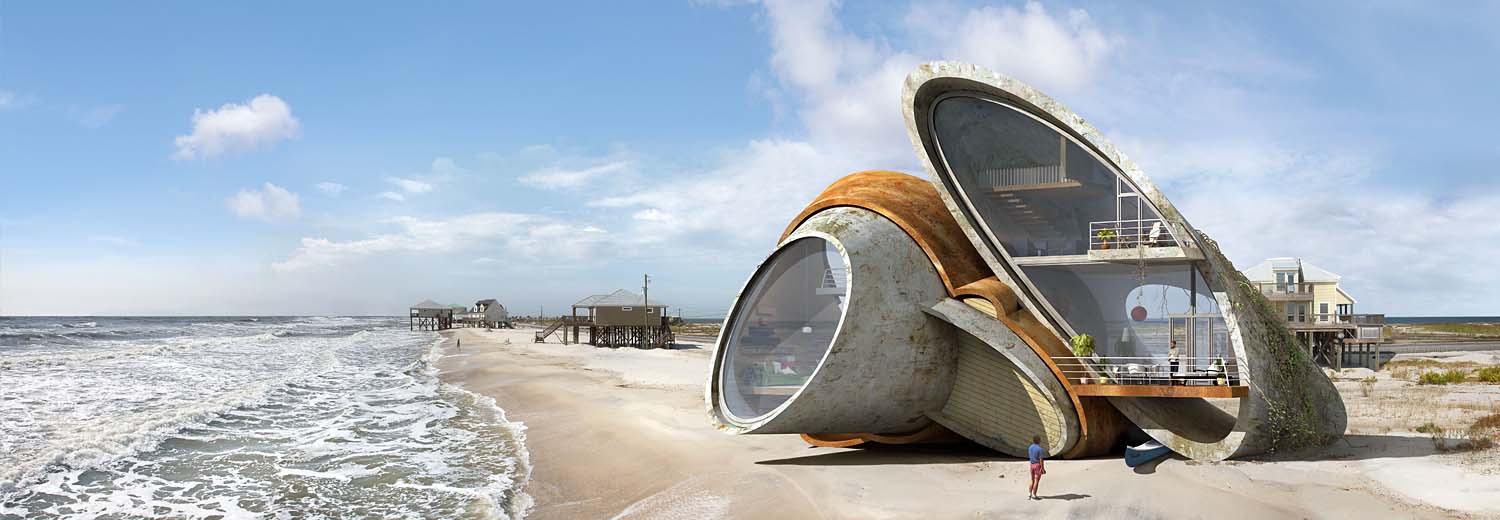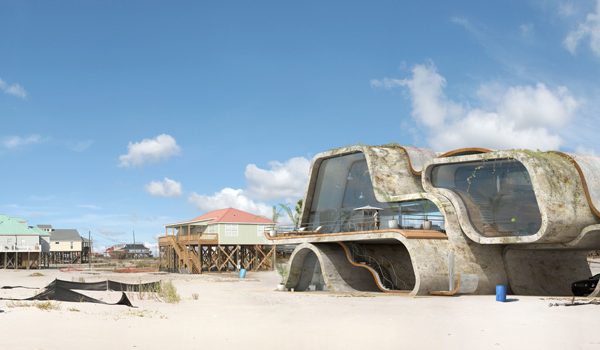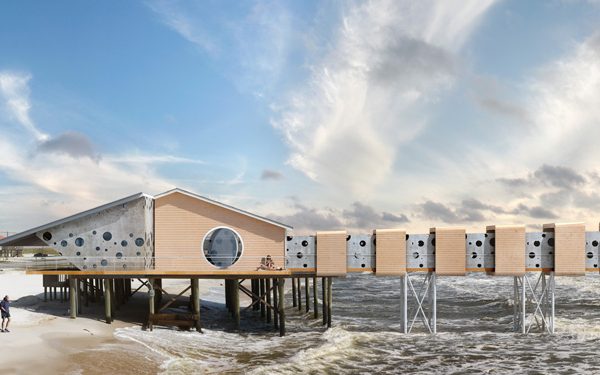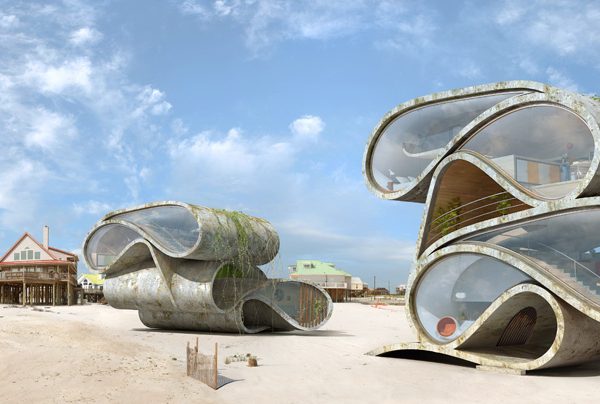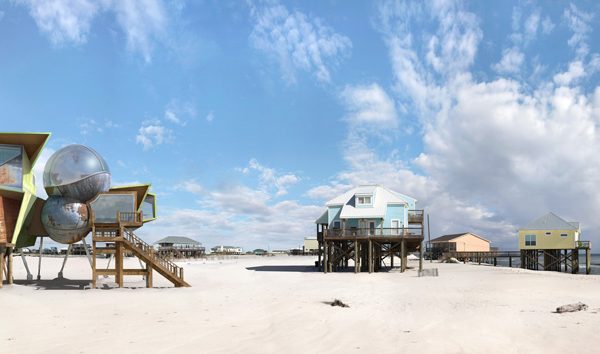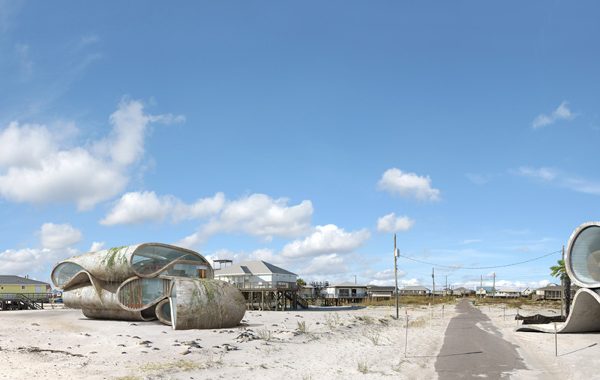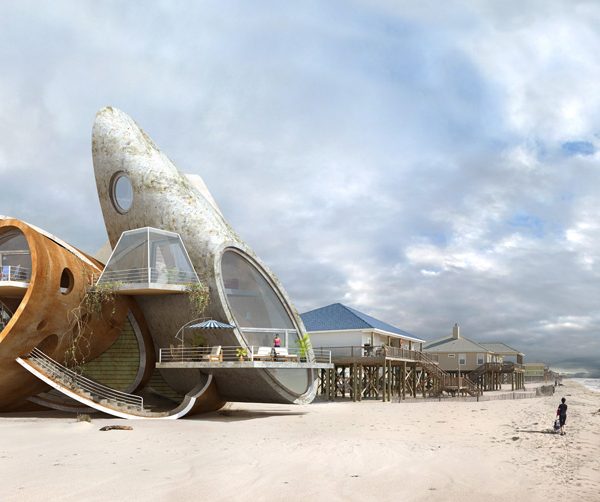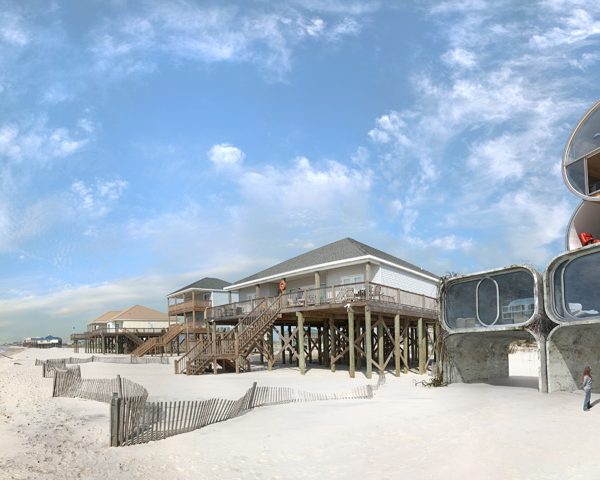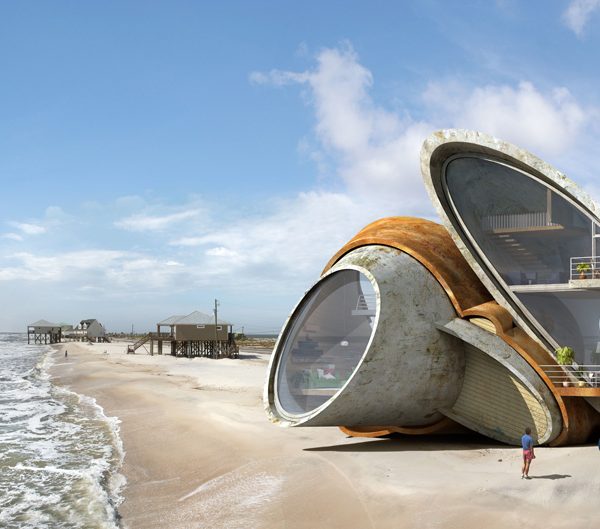Dauphin island by Dionisio González
2011-2012
“Dauphin Island” is located on a sandbar. The Gulf of Mexico is located to the south of the island, the strait of Mississippi and Mobile Bay are located to the north. At present, the island has an established population of 1,200 inhabitants and it is connected to Mobile Bay by Gordon Persons’ hyperboloid bridge, in an almost dream suspension. Although it has several bird sanctuaries, the main one is Audubon Bird Sanctuary, which is the first meeting point for birds emigrating north from South America. My interest in Dauphin Island originates from the study of different aquatic and palaphitic architecture, some of which dates back to the Neolithic. The fact is that the architecture of Dauphin Island has an element of resignation, servitude and submission to the environment that make it typologically ambiguous. On one hand, the fluctuations of the water level and relations with a non-consolidated or exposed environment mark the position and height of its buildings and, on the other, the superfluity or redundancy of many of the buildings make them magnetic, almost totemic, in an area conversely envisaged for fishing and leisure activities.
This obstinacy to consecrate the existence of the use of a land that is exposed to disruption, demolition or devastation places the inhabitants of Dauphin Island in the Promethean myth of daring to create or possess divine things. Thus, they experience the severity of random phenomena in the presence of deterministic phenomena in a reality that is modelled around probability distributions.
As a result of Katrina 250 houses were lost on an area of 16 square kilometres, and 170 as a result of Ivanonly in the western, most open, part of the island. Since 20 April 2011, when an accident on the Deepwater Horizon oil platform led to an oil spill of 800,000 litres per day, approximately 172 kilometres of barriers have been deployed along the Gulf coast. The tragic thing is that these barriers are so prominent that the American middle classes who seek to escape reality and relax on the island no longer visit. The reality of the matter, as the locals say, is that without visitors this place is doomed.
There is a certain phantasmagoria during low seasons that makes this an hypnotic region, not only due to the latent solitude, but also due to the fact that the construction and consolidation of the houses and their subsequent renovation are exposed to almost certain capitulation. They are the building structures of resignation. Money is the main reason why the houses in this region are made of wood and not concrete or brick. There is a certain inefficiency linked to the decline and, therefore, to the inanition marked only by a lack of economic resources. Apart from the impossibility to construct more resistant buildings with more expensive materials, this decline is also the result of greater tax burdens. The fact that there are no reinforced concrete homes in areas where there are tornadoes on a yearly basis is as irresponsible as building nuclear plants in seismic zones or houses on mountain slopes. Wood houses are built and sold quickly which is somewhat practical bearing in mind that Americans frequently change their place of work. It is an interesting development by those who take possession in the manner of a bricoleur, a type of moving topos based on labour mobility.
By taking these photographs my aim was to carry out a design project, a sum of interventions and alterations in the area, based on the existing “cartography”, but in consideration of the territory’s composition, based on a certain superrealism, a certain exaggeration and a respectful use of the land. To this end, I located small buildings, or buildings scaled symmetrically to the setting and executed them on gaps on the beach where the remains indicate a prior presence. My idea was also to restore and enhance the region’s very phantasmagoria, but based on energy-efficient buildings, with materials that can face the frequent storms and tornadoes that occur in the area, that imply a low level of energy consumption and that are observatories of nature.
Therefore, I have inevitably restored and redesigned the bunker as an effective building in the face of despondency and to avoid disintegration and disencumbrance in the area.”
Dionsio González. 2012

